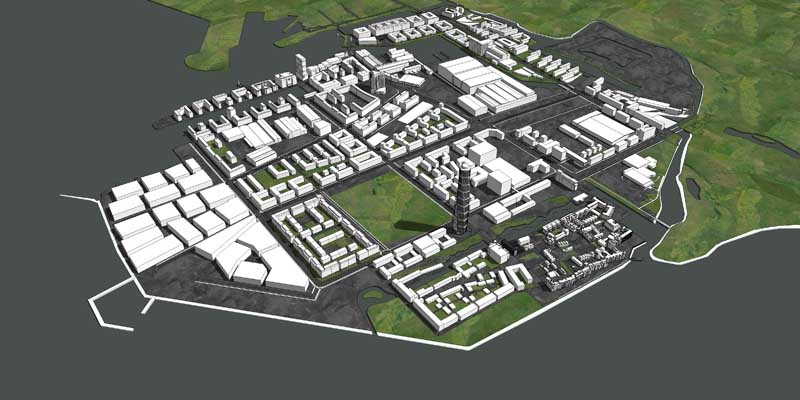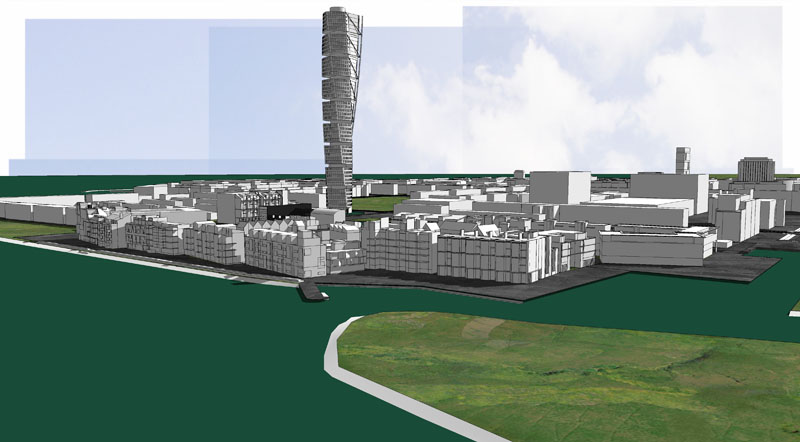Converting components to groups & deleting coplanar GROUPS?
-
I'm working on a huge model at the moment, most of which has been imported via Autocad and Archicad I believe. I've spent days grouping and layering buildings and topography correctly, deleting literally thousands of unnecessary triangulation lines (using J.H. Aughey's fantastic cleanup_model ruby), but there's one problem remaining- each building is made up of dozens of components (not groups- unfortunately somewhere in the conversion it makes components instead) and some of these (thankfully very few) are coplanar i.e. the conversion has created two identical shaped, but unique components in the same position. Not much of a problem in an SU file, but when you render it, these coplanar components produce a dark blotchy effect as render engines can't work out what to do with coplanar faces.
So my two question are this:
a) Does anyone know of a way (or ruby script) which can convert selected components (which are within hundreds of groups) into simple groups as I can't even open the components browser in SU due to the 3000+ pointless components in the file. Obviously I could go in to each building group and explode each component one by one and group them instead, but like I said, there's 3000+ of them. Please note I cannot PURGE these components as I need their contained geometry, it's just that I don't need them as components.
b) Can anyone think of a way (maybe even an SU style) which would allow me to see which components are coplanar with clones? There's probably only a couple of hundred in the whole file, but it's finding them that's the problem.

-
Dear Jackson,
I don't know if this will help, but here goes.
To sort out co-incident components, I suggest the following:
- select one of the components
- use Rick Wilsons instance.rb (at Smustard)to select all the other instances of that component
- make a component of the components and call it something meaningful, like Temp1
- go to "save as" and save Temp1 on your desk top; then open it
- explode Temp1 to give you all the enclosed components
- select each in turn (sorry, I can't think of a shorter way), then
- use the move tool to move the collection of components a useful distance
The last action will separate all the co-incident components.
- delete the now revealed copies
- select all the remaining components and move back the same distance
- explode all the components while selected
- make a component of the entities calling it Temp2 say
- use TIGs(?) explode to groups script
- select all the groups and make the collection a single component again, say Temp1
- go back to you main drawing, select Temp1 and use reload to replace.
- explode Temp1 to create the individual groups.
- run TIGs PurgeAll.rb to remove all the redundant components.
I'm sure that you have thought above the above, but just in case..
Kind regards,
Bob -
Thanks Bob! Unfortunately I can't use that method as all of the components are unique- even the coincident (that's the word I was looking for!) ones. I didn't make that clear.

Nevertheless, I'll see if TIG's explode to groups ruby can be of any help.
Thanks again,
-
Jackson, since the rendering is where you see the problem with coplanar components; seems you can use that to your advantage in trying to identify which components have a coplanar copy. Just create one or a few test renderers to identify your problem areas. Then you only have to mess with the few hundred vs. thousands.
If you are worried about trying to match up the render to the SketchUp file, just overly as a transparent film on top of the sketchUp model (maybe watermark (although that can be glitchy) or you can use 3rd party app that makes windows transparent.
-
Thanks for the suggestions David- unfortunately the model is so large and in places very detailed so it'll take a while to render all the LARGE format views I would need to be able to identify all the coincident components (and some of them are very small- I often only spot them in the final render- typical!
 ). I can usually find the offending coplanar faces by eye, but that's a good tip about using the VRay render as an overlay!
). I can usually find the offending coplanar faces by eye, but that's a good tip about using the VRay render as an overlay! 

Thanks again, -
Yep, with little surfaces here and their coplanar, vs. an entire building or building facade, I can see that being a pain.
Maybe SU 7 can add a "search for coplanar surfaces" option. I would thing some modeling apps would have this, but maybe easier with solid vs. surface modeling. Come to think of it, when you import Autocad to SU, is there a checkbox for "merge coplanar faces". I guess you are using that, but just not working all the time. (I can't access older threads in this post while I'm writing"
-
Hi Jackson. To speed up your rendering have to tried to simply select the entire model, right click and set everything to Static. You can reset it all back to Dynamic as needed. I work with large city models too and this speeds up rendering a lot.
Regards
Garth
Advertisement







